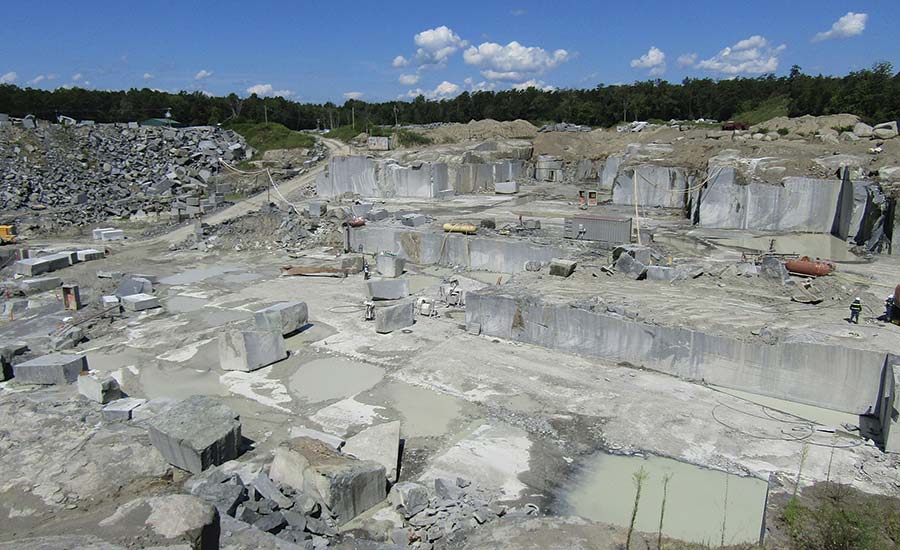Discovering the Rich History and Lasting Practices of Granite Quarrying
As we depend on the precipice of discovering the intricate tapestry of granite quarrying, a trip through time discloses not just the physical act of removing stone yet also the social and historical relevance woven into the extremely textile of this method. From the old origins that laid the foundation for modern-day quarrying techniques to the lasting techniques that are forming the future of this industry, each sculpt mark on granite surface areas tells a story waiting to be uncovered (granite quarries in south africa). The legacy of granite quarrying stretches much past mere extraction; it is a testimony to human resourcefulness, resilience, and the enduring attraction of this marvelous rock
Ancient Origins of Granite Quarrying
Dating back to old human beings, the practice of quarrying granite has been an indispensable component of human history and architectural improvement. The earliest evidence of granite quarrying go back to ancient Egypt, where enormous pyramids and complex sculptures were crafted from this durable stone. The Egyptians made use of primitive devices to extract granite blocks from quarries, showcasing the relevance of this product in their monumental buildings.
Moving on in background, the Greeks additionally made considerable payments to the quarrying of granite. The Greeks made use of granite in numerous building wonders, such as temples and sculptures, demonstrating their skill in shaping and carving this hardy stone. The Romans even more refined the techniques of quarrying granite, employing advanced devices like knives and hammers to essence and shape granite for their renowned structures.
Through the centuries, the practice of quarrying granite has actually advanced, with modern-day technologies improving efficiency while maintaining the classic charm of this all-natural stone - granite quarries in south africa. From ancient worlds to contemporary builders, the heritage of granite quarrying remains to shape our globe
Advancement of Quarrying Methods
The advancement of quarrying techniques has actually been marked by a constant development towards higher efficiency and precision in removing granite. Early quarrying techniques included hand-operated labor with basic tools such as knives, hammers, and wedges to extract granite blocks from the earth.
In even more current times, the advent of machinery changed the quarrying industry, enabling quicker removal prices and increased efficiency. Technologies such as ruby cord saws, high-pressure water jets, and pneumatically-driven drills have become basic in contemporary quarries, permitting for precise cutting and decreased waste. Moreover, innovations in computer-controlled equipment and 3D modeling have optimized quarrying operations, causing very little ecological influence and boosted sustainability techniques. As the need for granite proceeds to increase, the development of quarrying methods remains essential to conference sector needs effectively and sustainably.
Cultural Significance of Granite
Granite holds an extensive social importance across numerous people as a result of its long-lasting presence in building masterpieces and revered monoliths. From the marvelous pyramids of Egypt to the complex carvings of the Angkor Wat holy place in Cambodia, granite has been a product of choice for sharing magnificence and longevity in social heritage. In ancient Rome, granite columns decorated temples and public structures, symbolizing stamina and permanence. The cultural value of granite prolongs past its physical qualities; it embodies durability, security, and timelessness, making it a sign of enduring traditions and practices.

Sustainable Practices in Quarrying
Amidst the rich background of granite quarrying and its social significance lies a growing emphasis on lasting techniques within the sector. As ecological awareness and issues regarding source deficiency have actually enhanced around the world, the quarrying market has progressively embraced lasting techniques to decrease its effect on the environment and bordering neighborhoods.

Additionally, improvement and recovery of quarry websites post-extraction are integral to sustainable methods. By bring back quarried locations to an all-natural or beneficial state, such as creating wildlife habitats or leisure areas, quarriers can offset the environmental footprint of their operations and add positively to the regional ecological community.
Heritage of Granite Quarrying
With a historic background soaked in workmanship and commercial progression, what sustaining influence has granite quarrying left on the landscape of modern-day culture? The tradition of granite quarrying goes beyond simple extraction methods; it has shaped architectural wonders, city landscapes, and social heritage worldwide. The long lasting nature of granite has actually made it a over at this website favored option for monuments, buildings, and infrastructure, standing as a testament to the skill and artistry of quarry employees throughout generations.
Moreover, the economic impact of granite quarrying can not be forgotten. The industry remains to supply work possibilities and drive regional economic situations in regions where granite removal is widespread. It has actually also spurred technical improvements in quarrying methods and equipment, bring about a lot more effective and sustainable techniques.
In terms of sustainability, the tradition of granite quarrying consists of efforts to minimize environmental effects through improvement tasks and responsible source management. By balancing check out here financial interests with environmental stewardship, the sector strives to guarantee that future generations can remain to gain from this enduring natural deposit.
Conclusion
